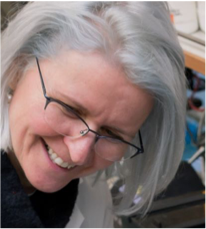
An inducible genome engineering approach for preventing immune rejection of hESC-derived beta cells
Sara D. Sackett1, Samantha A. Mitchell1, Nicholas Quirini1, Chew-Li Soh2, Inbal Caspi2, Anna Mikat1, Danwei Huangfu2, Jon Odorico1.
1Surgery, University of Wisconsin-Madison, Madison, WI, United States; 2Developmental Biology Program, Memorial Sloan-Kettering Cancer Center, New York, NY, United States
Introduction: Beta cell replacement strategies offer definitive treatment for patients with insulin-dependent diabetes, yet current transplantation therapies are plagued by donor shortages and immunological rejection preventing routine long-term success. Human pluripotent stem cells (hPSC) have the potential to provide an unlimited supply of beta cells and recent advances in directed differentiation into functionally mature glucose-responsive cells have prompted the initation of clinical trials. An ideal T1D therapy should incorporate both a sufficient supply of beta cells and a means to suppress immune responses that cause allograft rejection or autoimmunity. We still lack technology to counteract the rejection of transplanted donor cells without applying chronic immunosuppression. Genome editing enables highly efficient and multiplexable manipulation of immunomodulatory molecules to study the effects on immune responses. Here, we propose a genome engineering approach to resist allograft rejection by attenuating the expression of HLA molecules and expressing transgenes (Tgs) on hPSCs, to determine if the modifications can provide enough protection to render the cells invisible or less exposed to the host immune system.
Methods: Through a multi-layered genome engineering strategy we have silenced B2M and CIITA, which control cell surface expression of HLA I and HLA II by CRISPR/Cas9 editing in hPSCs. Concurrently through a TALEN-based system, we have generated cell lines that in response to doxycycline (Dox) express two immune inhibitory molecules, CTLA4-Ig and PD-L1, to block pathways of T cell co-stimulation, either with or without an HLA I- and II-deficient background. These cell lines were expanded and characterized via in vitro methods (IF, western blot, FACS, and custom ELISA) and in vivo assays for pluripotency and optimal Dox dose determination. Dox was administered via food, water, implanted time release pellets.
Results: We have validated the cell lines for retained pluripotency (Tra-160, AP) in vitro, and for teratoma formation in vivo. We detected Dox-induced Tg expression via FACS, western and immunostaining/IF assays. We designed an ELISA specific to CTLA4-Ig, with which we can detect Tg from the supernatants of Dox treated cells. We confirmed cell-type specific expression of Tgs in teratomas that was Dox dose dependent. HLA KO and Tg expressing cells are capable of differentiating into hPSC-islet-like clusters (SCILCs).
Conclusion: We anticipate future experiments to determine whether these modifications are able to prevent or delay the rejection of SCILCs transplanted into allogeneic humanized mice and/or allogeneic immune responses in vitro.
Juvenile Diabetes Research Foundation, 3-SRA-2017-364-S-B.